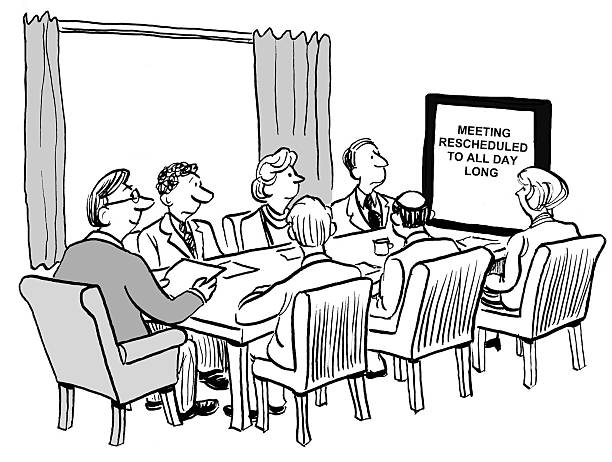SHOULD WE DO ‘NO MEETING DAY’ FOR A GOOD MENTAL HEALTH?
Too many meetings are not good for mental health.

Emerging work from home means that perhaps you will do zoom meetings all day long. I remembered when the pandemic was about just to start, my husband just did zooming from morning until night!
It was insane as I saw that this WFH made him even busier than before. My next question, when he started to do his own task, in fact, that he spent his day just made lot of coordinations with his team. Someday, he even borrowed my laptop because he needed to attend two meetings at the same time.
I thought that he shouldn’t come to all that meetings. Sometimes, we should come to unnecessary meetings because it’s mandatory. But, should we actually need to come?
Too many meetings are not good for mental health
According to 2019 survey from Workfront, U.S. workers say they spend only 40% of their workday on their primary tasks, due to emails and wasteful meetings that hamper productivity. Yes, too many meetings are a cause of irritation and frustration for the highly productive employees and also some top management. Meetings bring down productivity and cause resentment, in the minds of those who are called for these meetings, against the leaders or senior person calling the meetings.

They see these meetings as ignoring of their passion and desire to achieve more. When top performers get frustrated and they choose to look for employment elsewhere, your company is the losing party. Such ‘smart ones’ refuse to waste their time, skills, and talents listening to some person or persons who sometimes don’t even know what they are talking about – these people want to be out there making things happen and achieving new heights and are extremely impatient and intolerant of sitting around listening to people.
This is the reason why Singapore apply ‘no meeting day’
Copying from Today Online, Singapore is in a move to give its employees a break, or simply to catch up with other projects. The the FairPrice Group has announced that there will be no meetings on Friday afternoons from Aug 14 onwards — barring exceptional cases.
In a brief Facebook post on Friday, the group’s chief executive officer Seah Kian Peng said the group was advocating this in part to “help address fatigue and manage stress” among its workers.

A ‘No-Meeting Day’ is traditionally a single day each week where team members block off their calendar to focus on deep work. This concept might seem radical to some ‘how does work get done if no one is checking in?’, but ‘No-Meeting Days’ are growing in popularity among many companies.
This hype is not only happening in Singapore. Some startups in Indonesia like BukuWarung, apply a ‘no meeting day’ policy to increase workplace happiness. The day is every Thursday with a theme #NeedSpaceDay. Like its name, it enables employees to make choices without contacting the manager. Once they face an issue, a typical reaction is to hold a team meeting and discuss it.
While this might encourage a collaborative culture, it can also discourage employees from being independent problem solvers. If a company decides to reduce the number of meetings, employees get to be more autonomous, thus cultivating a culture where problem-solving becomes their nature.
How to implement no meeting day policy
The purpose of a meeting-free day is to set limits and boost productivity. This is why communication is the most crucial aspect of implementing a no meeting day policy. Employee surveys sent over Slack or email are an excellent place to start. HRinAsia give some things you need to consider before implementing this policy.
Deciding the most suitable ‘no meeting day’
Among five days of work week, from Monday to Friday, you need to decide one most suitable day for ‘no meeting day’. In deciding this, consult all departments in your office to see which day is agreed upon along with its viability.
However, if there is no general agreement reached, this policy can be implemented on a smaller scale, such as ‘no meeting day’ in each department. Rely on data about the time and activities to decide your team’s busiest days. Try to avoid meeting between work cycles so that there are possibilities to address hurdles, make deadline adjustments, and so on.
Be productive with agenda
’No meeting day’ policy is intended to encourage individual issue solving and productivity. However, this policy may have very little influence if the meetings are ineffective in the first place. When the meeting agenda is not present, each attendee will bring their own objectives to the table.
Having no agenda can lead to more follow up meetings that give employees more burden and making it much more difficult to implement no meeting day. Thus, prepare an agenda for every meeting, so the direction is clear and the meeting will be productive.
Be flexible for urgent circumstances
While it is good that there is a day where employees do not need to worry about preparing a mental state for meetings, you need to provide flexibility. During peak seasons or when the company is dealing with lots of clients, ‘no meeting day’ policy may impede communication.
Therefore, you need to be flexible for urgent circumstances where there should be a meeting to be held on a day where meetings are supposedly banned. If you still want to ensure that employees will not get a burnout, compensate for this by giving a few days of no meeting once the business operation gets less hectic.
At the end of the day, the positive outcome of a ‘no meeting day’ policy is what matters most. Employees should also perceive this policy as something positive that can lead to happiness. Whether or not a ‘no meeting day’ policy is suitable for your company, there are lots of alternative approaches to address the needs of your company.
#THE S MEDIA #Media Milenial #no meeting day



























